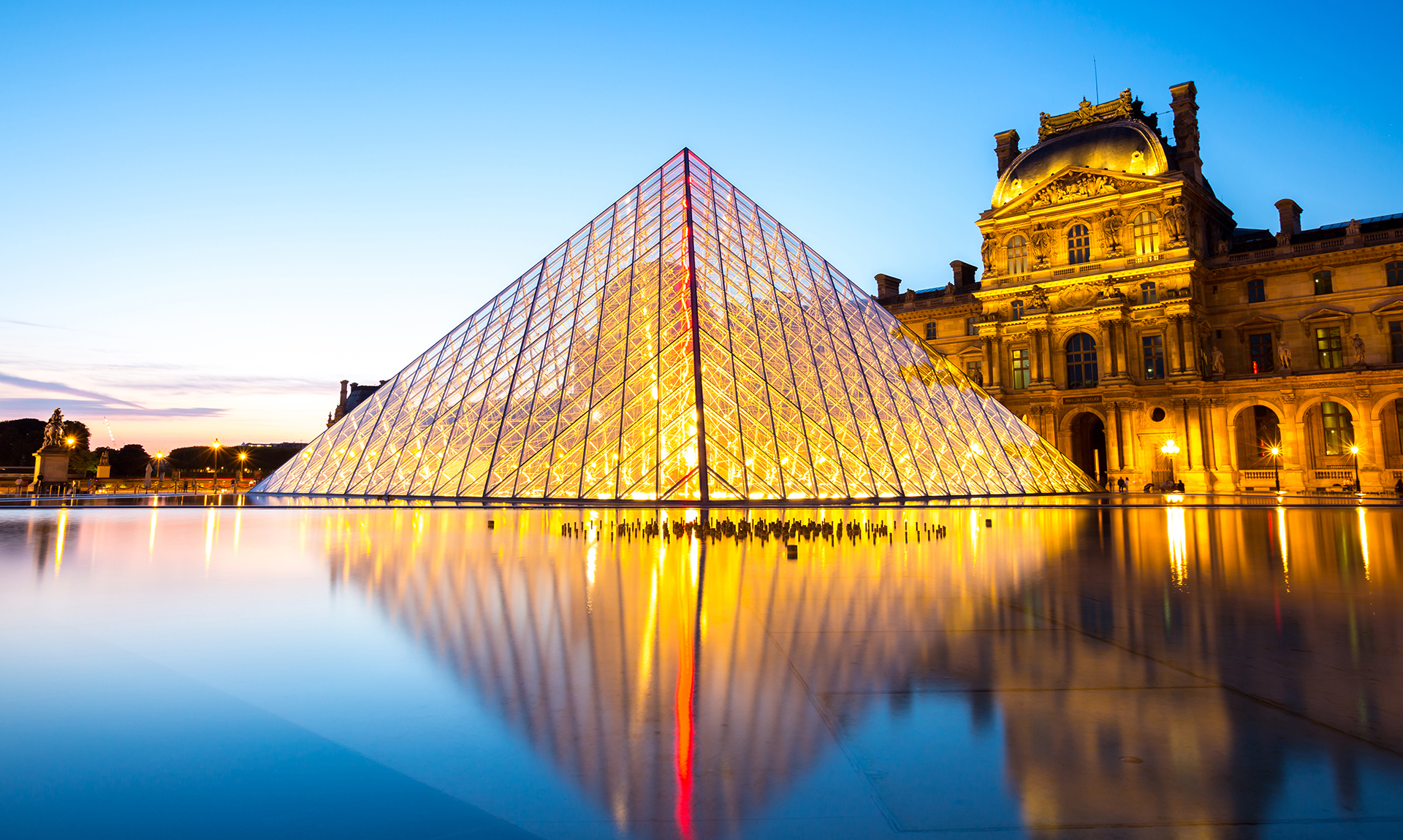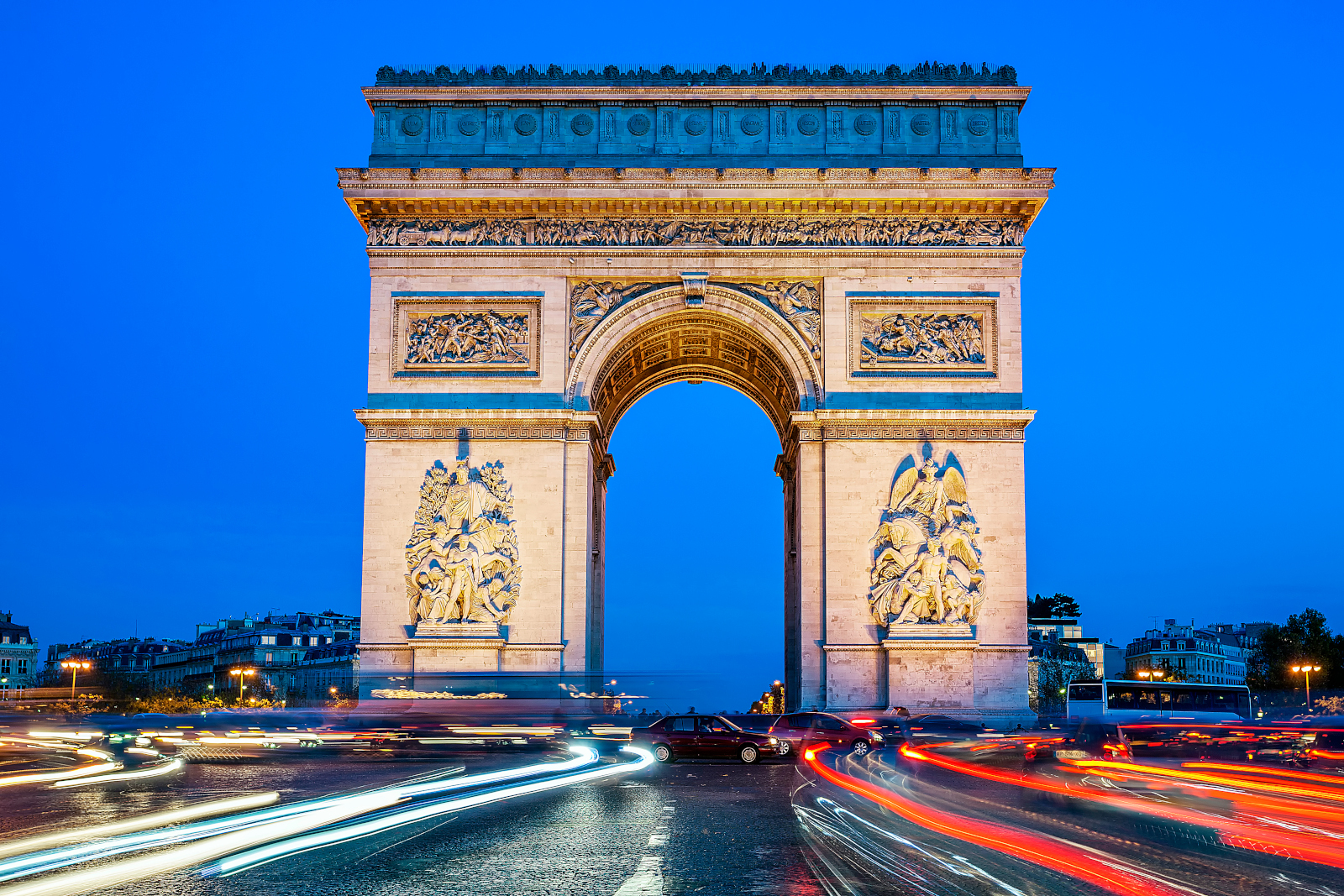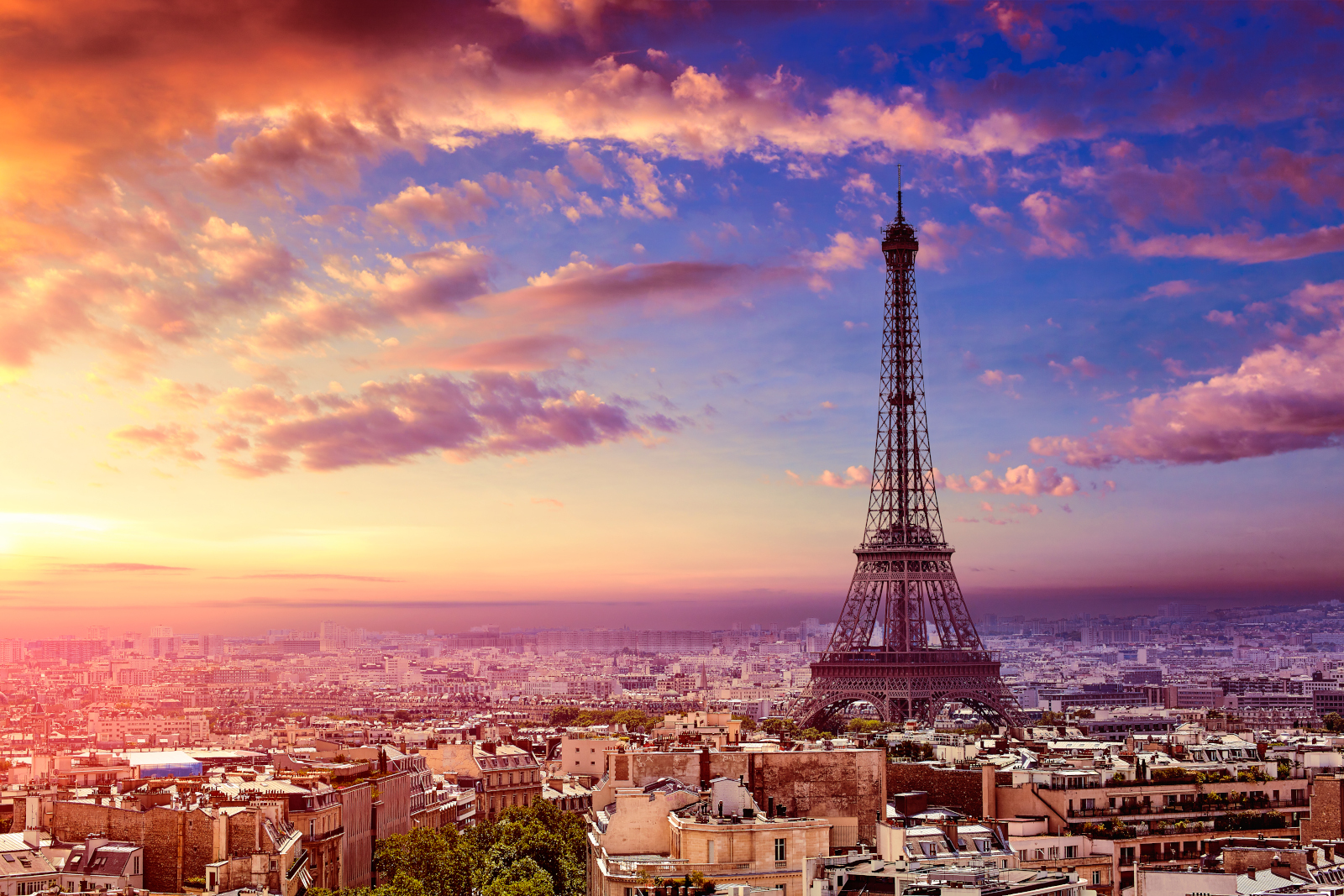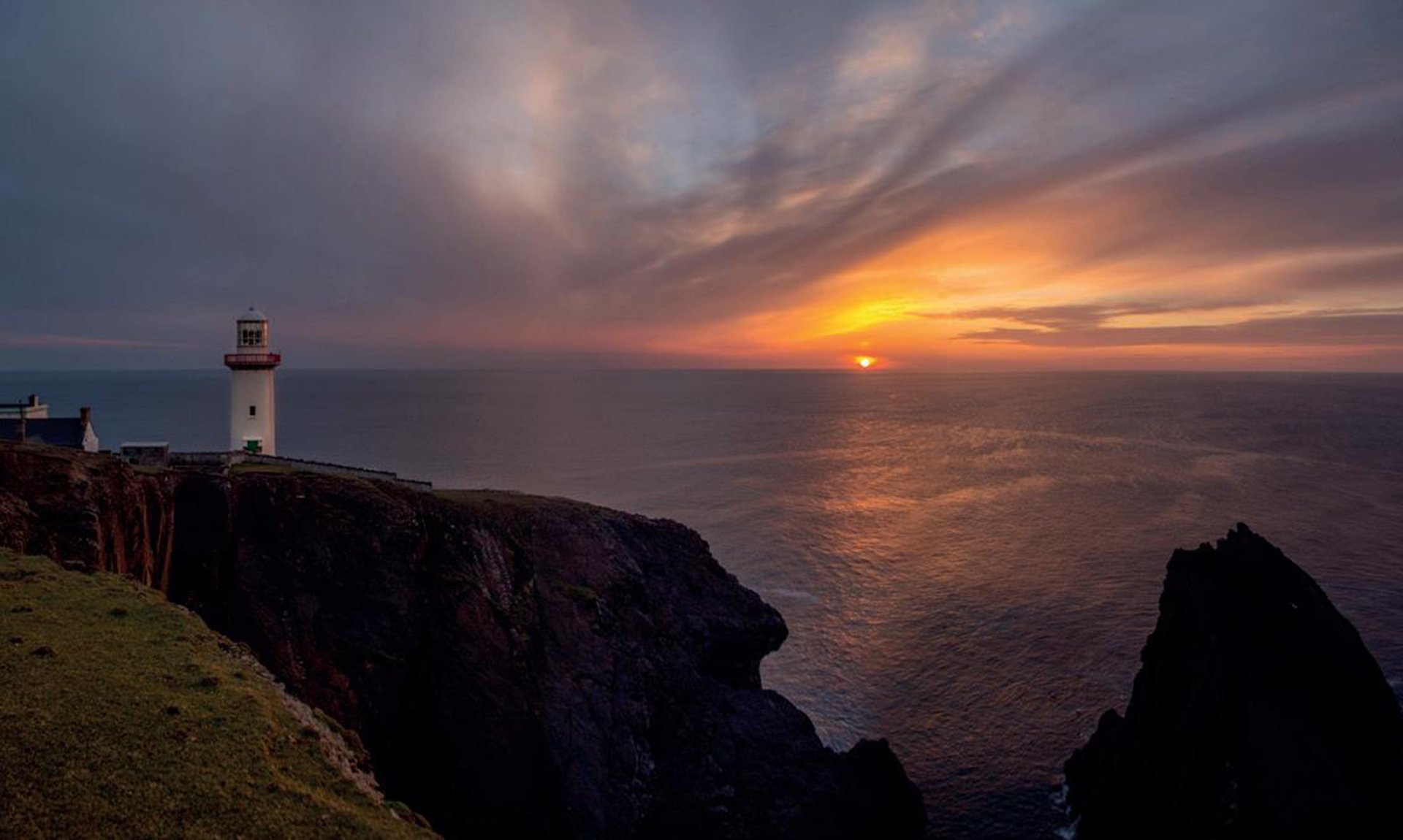
Paris
I Love Paris
Oh-la-la! Paris in the springtime must be one of the loveliest and most romantic places to be on the face of the planet…
And it’s everything you’d imagine it to be – a breathtaking city riddled with fantastical stories – of Quasimodo, of Amelie Poulain, of lovers kissing beneath the Tour Eiffel, of revolutionary intrigue, of a serenely smiling Mona Lisa, and of high kicking can-can girls.
So come with me on a tour of Paris and you’ll see fantasy become reality in the most beautiful and romantic way possible…
Île de la Cité
Let’s begin at the heart of the city, the Île de la Cité. This is the historic cradle of Paris, where the Celtic tribe of the Parisii settled more than 2,200 years ago.
Today the island floats like a small, green peaceful oasis in the middle of the big hectic city. The Île’s Square du Vert Galant is particularly tranquil. This charming green garden at the very tip of the island gets its name – which means ‘the hearty gallant’ – from King Henry IV, who was infamous for his romantic shenanigans.

Arch of Triumph at night, Paris, France
Conciergerie
From the park stroll across the Quai de l’Horloge to The Conciergerie, a part of the old royal palace that served as a state prison in the 14th century. This is said to be the oldest prison in France and contains the cell where ‘Let them eat cake’ Marie-Antoinette was imprisoned before facing the guillotine.
Palais de Justice and Sainte-Chapelle
Just around the corner stands the high court. It was in this hall that Louis XIV uttered the infamous sentence: “I am the state.” It was also from here that the Revolutionary Tribunal demanded the heads of aristocrats in 1793. Over the next two years more than 2,600 death sentences were pronounced in the Palais, and the condemned were taken by cart to the guillotine on Place de la Concorde.
Sainte-Chapelle, one of the oldest and most beautiful churches in Paris, also lies within Palais de Justice complex. Built by Louis IX in the 1240s to house relics from the Holy Land that included what was believed to be the original crown of thorns, Sainte Chapelle provides one of the most inspiring visual experiences in Paris due to its stunning stained-glass windows.

A binocular looking over a building in Paris, France
Notre-Dame de Paris
From Sainte Chappelle, if we wander past the flower stalls of the Quai de la Corse we’ll arrive at the Medieval symbol of the city – Notre-Dame.
Originally the site of a Gallo-Roman temple to Jupiter, a Christian Basilica and a Romanesque church; construction of Notre-Dame began in 1163 during the reign of Louis VII. This magnificent cathedral, which is one of the most important early Gothic buildings in the world, was completed almost 200 years later in 1345.
However, in April 2019 while Notre-Dame was undergoing renovation and restoration, its roof caught fire and burned for about 15 hours. The cathedral sustained serious damage as a result. Restoration is still ongoing and hopefully, it won’t be long before we can climb the 387 steps to the top not only for the fantastic view of Paris – but also to have a look around for Quasimodo!
Hôtel de Ville
If we cross the Seine, we can see the mobile ‘bouquinistes’ (booksellers) along Quai de l’Hôtel de Ville.
The beautiful Hôtel de Ville itself is the seat of the Paris City Council and has been at the centre of political life in the French capital for centuries. The current city hall is built on the site of the old 16th century city hall that was set on fire during the 1871 Parisian revolution.
The Louvre
From the city hall we’ll head along the Rue de Rivoli towards The Louvre. The Rue de Rivoli is one of the most famous streets of Paris, and with its café society and boutiques, the street is a stroller’s paradise.
And of course, the gem of the Rue de Rivoli is The Louvre, with its 15 acres of exhibition space that makes it the largest museum in the world. The origin of this impressive complex goes back to the 12th century when the Louvre was a fortress. After a spell as a royal palace, the Louvre opened its doors as an art museum after the Revolution.
We should go in, if only to catch a glance at the serene smile of the Mona Lisa. The restaurant, ‘Le Grand Louvre’ is a must for lunch as it has great views of the gigantic glass pyramid, designed by the American Architect Ming Pei.

Picturesque grandiose sunset over Cathedral of Notre Dame de Paris, France. Panorama
Palais-Royal
Opposite the Louvre, the Place du Palais-Royal leads to the Palace of Cardinal de Richelieu, which was built in 1624. In the 18th century Louis-Philippe d’Orléans – who became Philippe-Egalite after the Revolution – undertook extensive building around the palace garden.
He built a beautiful oblong of colonnaded galleries and a theatre. The playhouse has been the home of the state theatre company, the Comédie Française, since Napoleon’s time.
Place des Pyramides and Place Vendôme
Back on the Rue de Rivoli the next place we’ll stumble across is the Place des Pyramides. A beautiful golden statue of Joan of Arc stands
glistening not far from where she was wounded at the Saint-Honoré Gate in her unsuccessful attack on British-held Paris on September 8th, 1429.
The Tuileries
Many-a stressed out Parisian is sure to find peace and quiet among The Tuileries’ many flowerbeds, sculptures, avenues and splashing fountains.
This garden once enclosed the 17th century house of Catherine de Médici. The current layout of the Tuileries is set around a wide central avenue that extends from the Louvre to the Great Arch at La Défense. Through the metal railings, we can sneak a peek of the Elysées Palace, which has been the residence of the Presidents of the French Republic since 1873.
Place de la Concorde
Despite the racket and the noise of this crazy roundabout, this vast square remains one of the most beautiful spots in the French capital. On one side we have a view of the magnificent road leading up to the Arc de Triomphe and La Defense, while on the other side we have the Louvre, the Madeleine and the Palais-Bourbon.
The Champs-Elysées
From the Place de la Concorde, France’s most famous boulevard, the Champs-Elysées stretches out to the Arc de Triomphe in the distance. This great long avenue takes its name from Greek mythology – the ‘champs-elysées’ or ‘elysian fields’ was where the souls of heroes
and virtuous men found eternal rest.
Originally the Champs-Elysées was a favourite place to stroll, but in 1814 it was destroyed by the Cossacks. It was not until the Second Empire that 3,000 gas lamps and fountains were installed in an attempt to re-establish the popularity of the boulevard. In 1902, the arrival of metro line number one gave a stamp of modernisation to the Champs-Elysées, and the boulevard’s many hotels, cinemas and restaurants began to appear. The Champs-Elysées radiates splendour with its broadened pavements, lantern posts and trees.
The Arc de Triomphe
Back in 1806, Napoleon commissioned what was to become the world’s greatest triumphal arch in honour of his ‘Great Army’. Construction began in 1806 and was still in the early stages in 1810 when his new imperial bride, Marie Louise the Archduchess of Austria arrived – so a gigantic full-scale representation was erected on the site to celebrate her arrival. Napoleon was never to see the soldiers of his old guard file through the monument, which was inaugurated in 1836 by Louis Philippe.
The Arc centres around great displays of French national pride: it has been the starting point for the July 14th military parades since 1919; the liberation of Paris parade in 1944 began at the Arc, and when France win the football – you can bet that there is a party right here at the Arc de Triomphe.

Paris Eiffel tower and skyline aerial view in France
Tour Eiffel
It’s time to head underground. From the Arc de Triomphe, we can take a tube ride on line 6 ‘Nation’ to Bir Hakeim. Back above ground, we are greeted by the Eiffel Tower, the unmistakable symbol of the city on the Seine.
Standing at 324 metres, the Tower is probably one of the most famous monuments in the world. Built by Gustave Eiffel in 1889 for the World Exhibition, the ‘Dame de Fer’ (Iron Lady) was dubbed as ‘awful’ and ‘superfluous’ – but today people from the four corners of the globe flock to see this iconic symbol of all things French. In fact, the Eiffel Tower welcomes over 7 million visitors every year who gaze at the legendary view of Paris from the Tower’s highest floor.
It’s the perfect way to finish our stroll through the streets of Paris. And looking down on this grand metropolis, I just can’t help but love Paris… Ooh-la-la!



